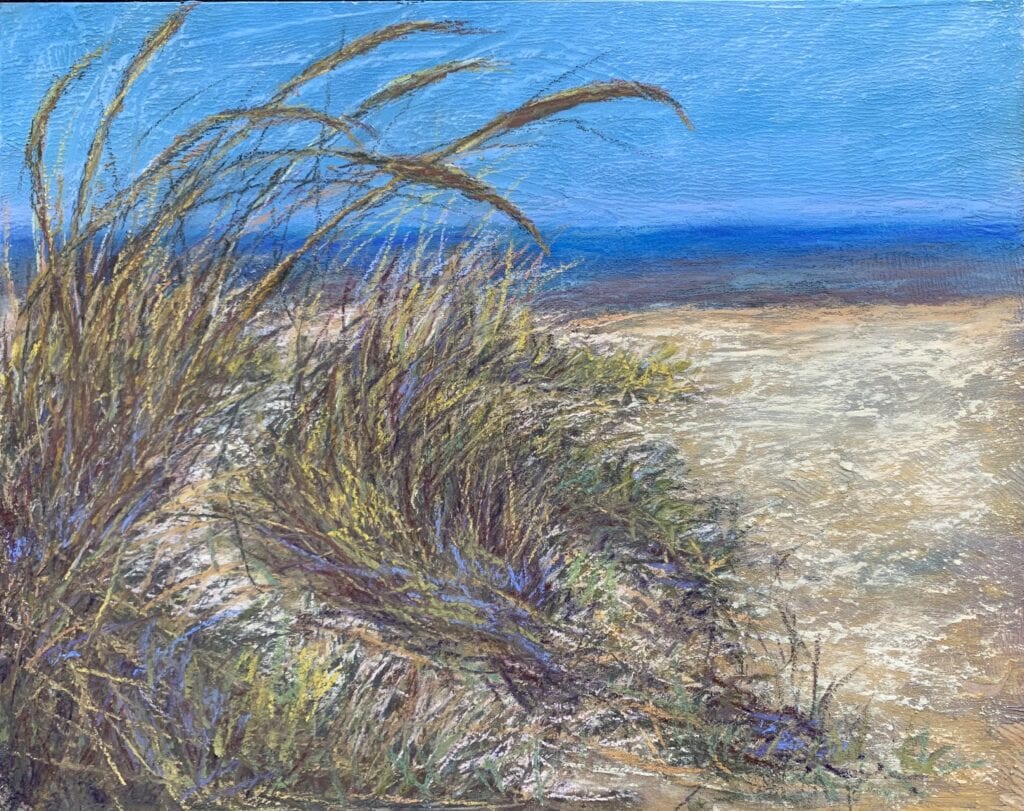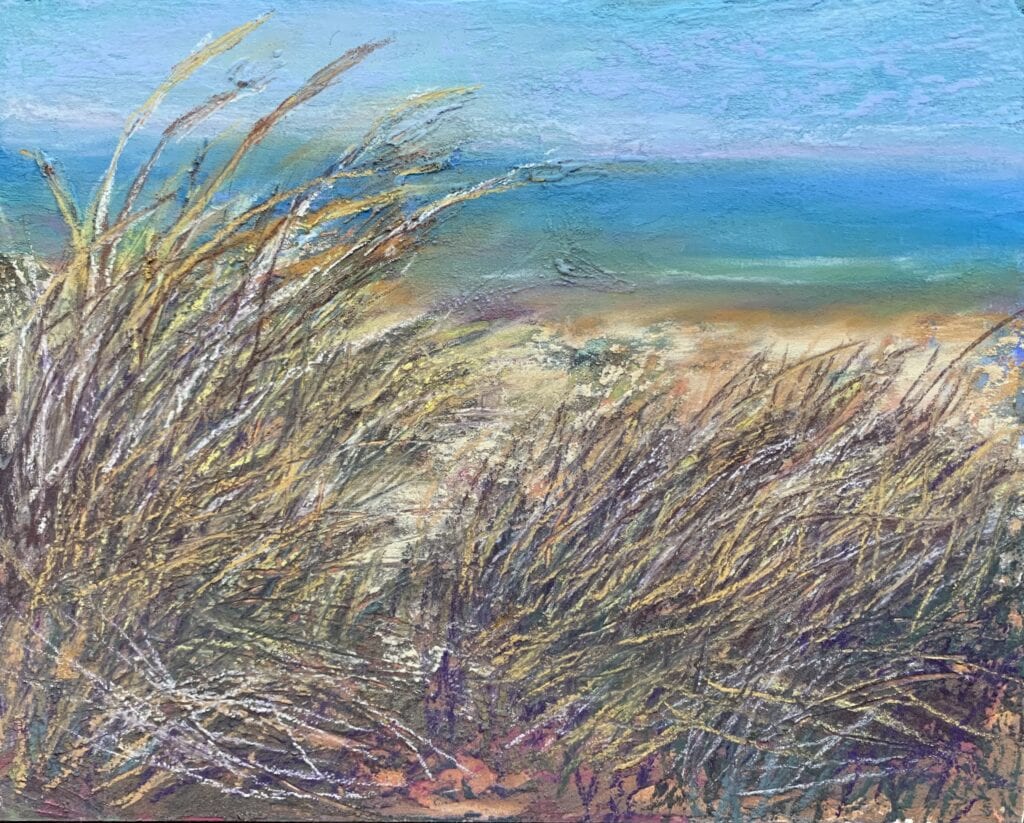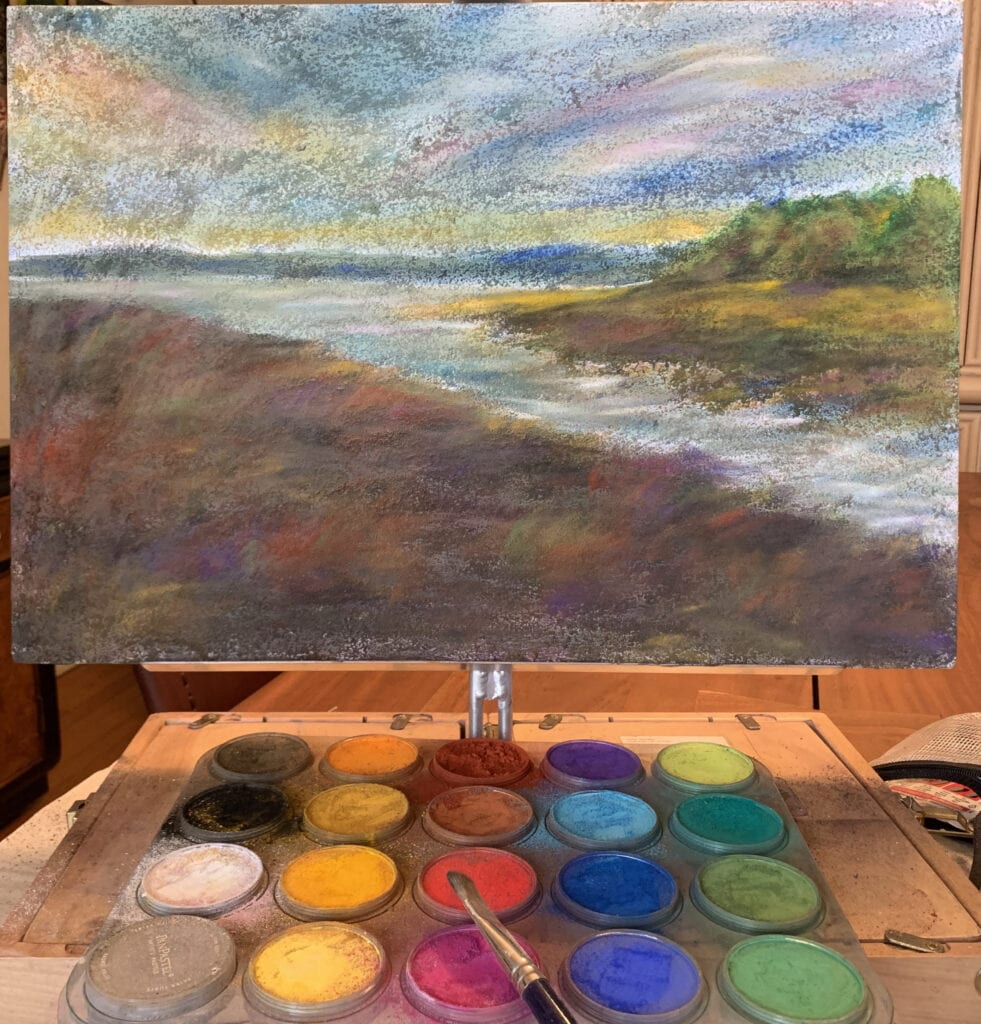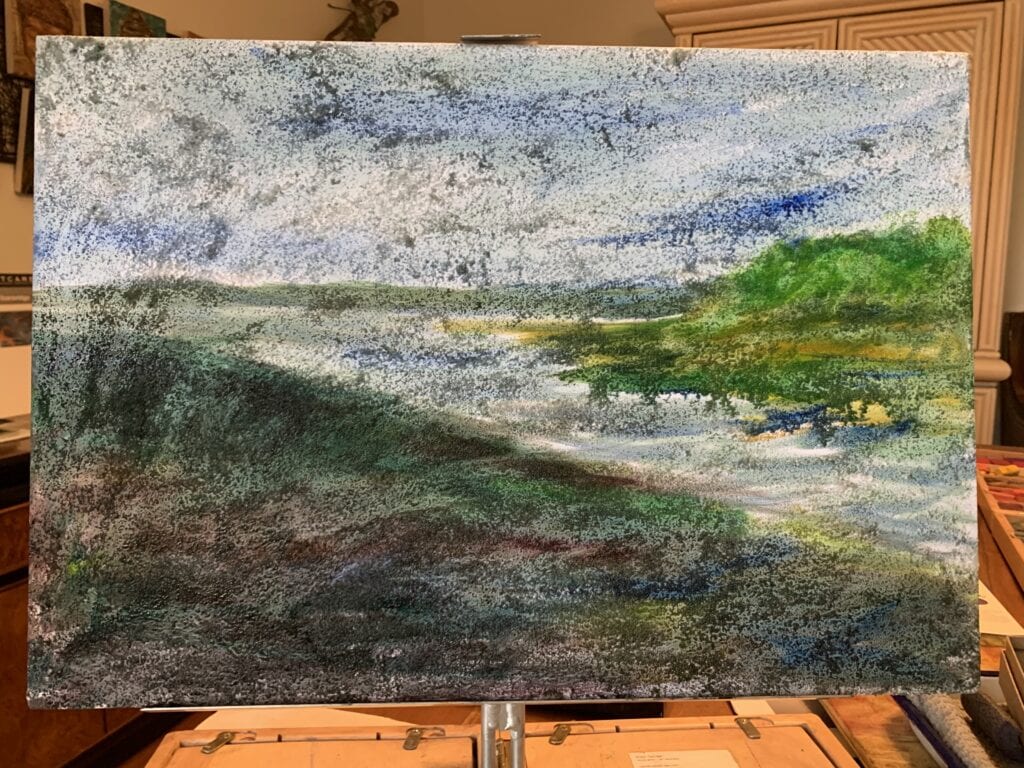Gesso and Pastels
Recently I became aware that soft pastel and encaustic aren’t that different! A few characteristic qualities I love about the encaustic medium are the ability to create textures and depth, being able to layer three-dimensional color, and experiencing tactile art making. I feel like using gesso to prepare the pastel surface gives me the same tangible satisfaction, as if I were painting with wax!

soft pastel & gesso on Pastelbord
11″ x 14″
I watched Carol Strock Wasson demonstrate this technique a few weeks ago. Carol combined the transparent gesso with bits of pastel, blocked in color and created texture on her paper using brayers and palette knives. She worked effortlessly in a carefree, liberating way, as this was just the first layer of blocking in color.
I have plenty of broken pieces of pastel, and use a palette knife to crush the pastels into powder. I then combine pastel powder with transparent gesso and apply it to the surface, (my surface preference so far has been pastelbord). Next… I scrape, make marks, play with the tinted gesso! This process is very similar to my style of encaustic painting.

soft pastel & gesso on Pastelbord
8″ x 10″
I had previously been using coarse pumice gel, trying to create a workable, tactile base on the pastel surface, but the coarse gel was like concrete. First, I applied an oil stain to set the composition, but the texture prevented the soft pastels from reaching the surface and I was forced to use a paintbrush with pan pastels to apply color.

pan pastel & pumice gel on gatorboard
16″ x 23″

Fine pumice gel would be more manageable for creating a textured surface but now that I have discovered textural ways to apply transparent gesso I doubt I’ll want to go back to using pumice gel! It feels like a whole new world of pastels just opened up to me, and I can hardly wait to work on the next pastel painting!